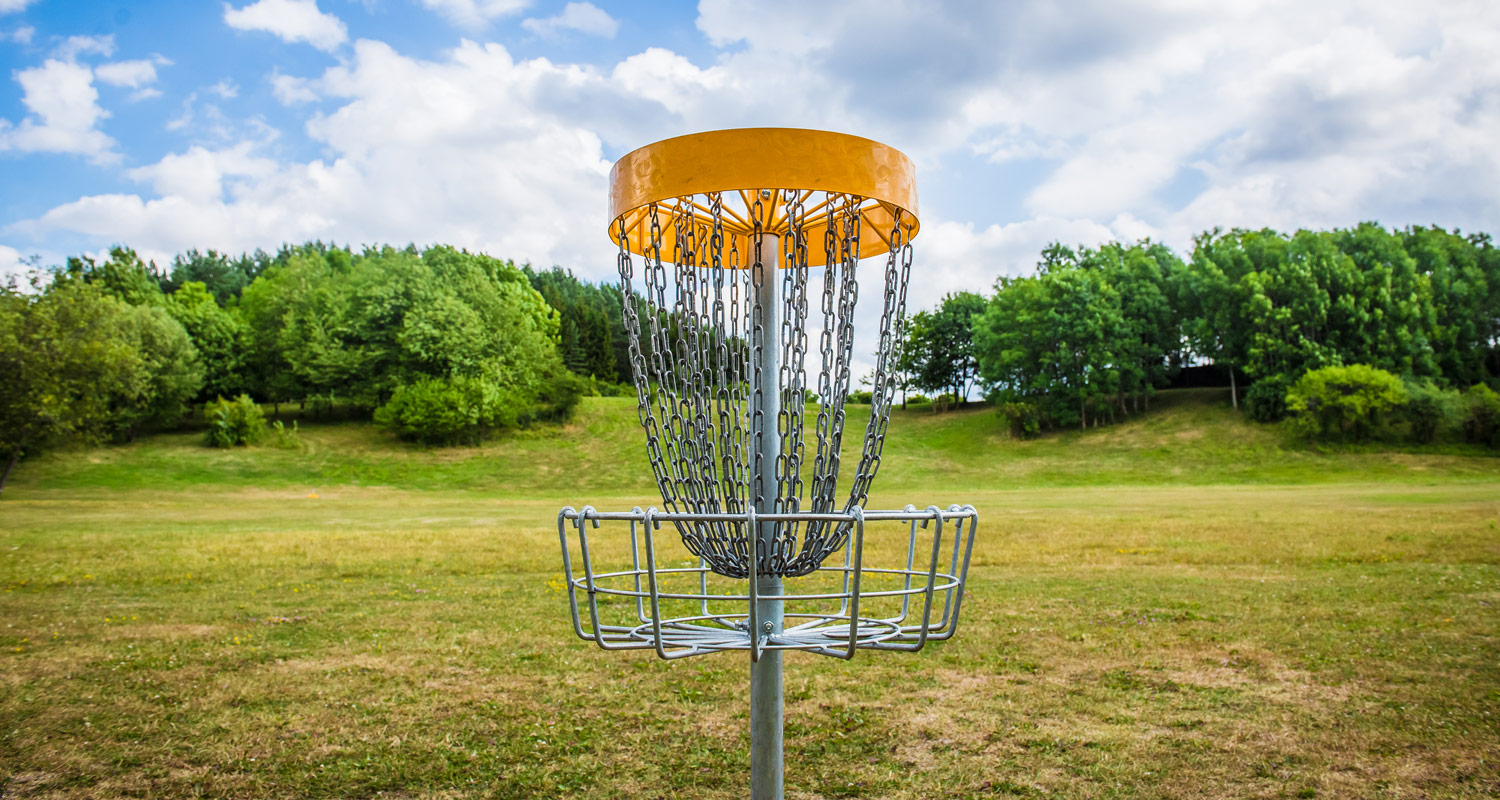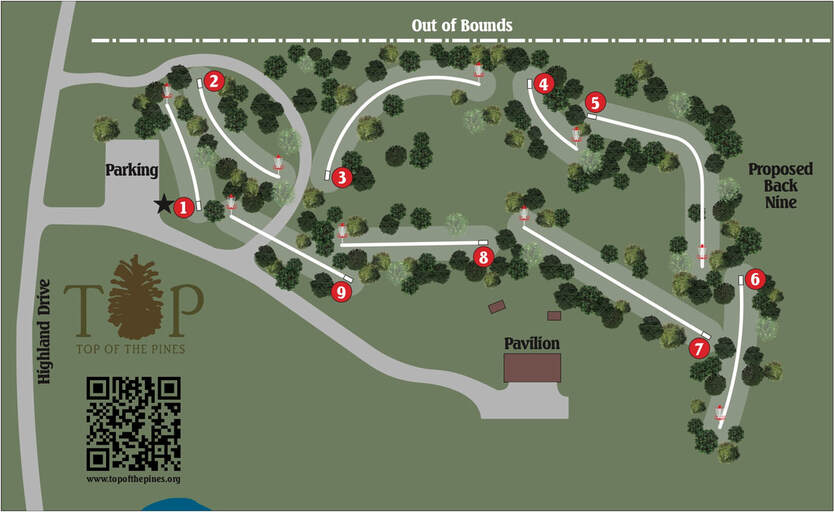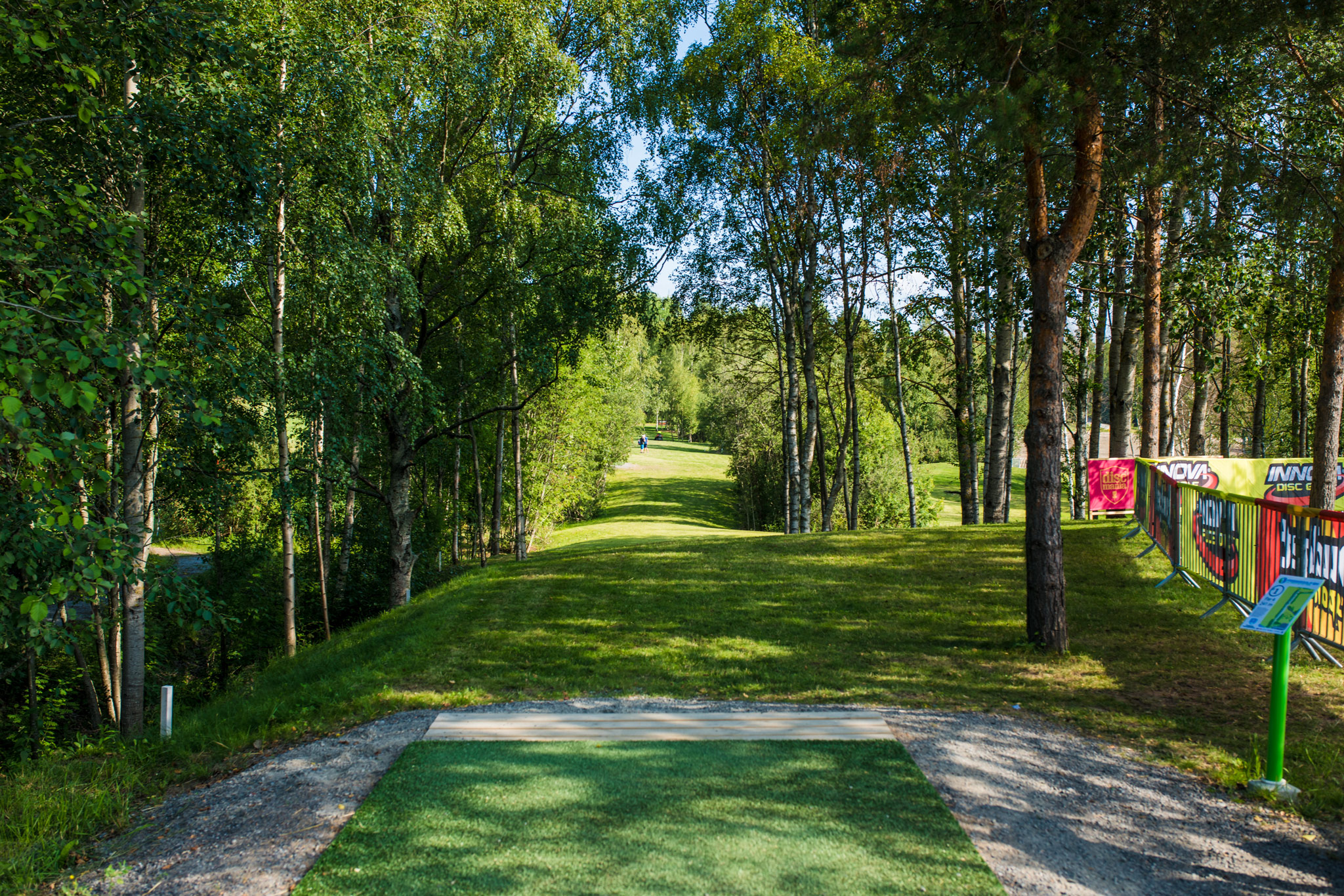To set up a frisbee golf course, first select a suitable location and design your layout. Next, install baskets and tee pads according to your planned course design.
Disc golf, also known as frisbee golf, combines the ease of frisbee throwing with the gameplay of golf. This recreational activity has gained immense popularity, and setting up a course is straightforward with proper planning. Begin by scouting for an area with diverse terrain, which adds challenge and interest to the game.
Ideal spaces include parks, wooded areas, or fields with varying obstacles. Once a location is chosen, create a design that features a series of basket targets and tee-off areas. It’s crucial to space out the targets strategically to accommodate different skill levels. Ensure clear marking of each hole, typically ranging from 9 to 18 holes per course, and include signage to guide players. Don’t forget to focus on safety by avoiding areas too close to public spaces or walking paths. With these steps, you can set up a fun and engaging frisbee golf course.
Contents
Introduction To Frisbee Golf
Imagine a game where the calm of golf meets the thrill of a flying disc. This is frisbee golf! It’s a fun sport for all ages. You play it with a frisbee. You aim to hit targets with the least throws possible.
It’s easy to learn. It’s perfect for sunny days in the park. You don’t need much to start: a frisbee and a course. Setting up your own course is simple. Let’s dive into the origins and what makes frisbee golf today’s favorite.
The Origins Of Frisbee Golf
Frisbee golf started back in the early 1900s. It began when people threw discs at targets. The targets were trees or poles. The official sport took off in the 1960s. A man named George Sappenfield made it popular. He created the first formal course.
Modern Popularity Of The Sport
Today, frisbee golf is loved worldwide. It has thousands of courses globally. People of all ages play it. It’s a professional sport now. They even hold world championships! It’s a community sport too. Many parks have free courses. You can set one up too!

Credit: www.innovadiscs.com
Essentials Of Frisbee Golf
The essentials of Frisbee Golf combine the laid-back atmosphere of Frisbee with the strategic play of golf. Setting up a course for Frisbee Golf, also known as Disc Golf, offers a delightful outdoor experience. With the right equipment and understanding of the rules, anyone can transform a local park or backyard into a fun and challenging course.
Equipment Needed For Play
To get started with Frisbee Golf, a few key pieces of equipment are necessary:
- Discs: Players need at least one disc, but typically have a set including a driver, mid-range, and putter.
- Targets: Official metal baskets serve as holes, but makeshift targets also work for casual play.
- Scorecards and Pencils: Keeping track of scores is essential for competitive matches.
- Course Map: A map helps players navigate the course and locate each target.
Always choose durable equipment that can withstand outdoor elements.
Understanding The Rules
Knowing the basics helps maintain the flow of the game:
- Objective: Complete the course in the fewest throws.
- Tee Throws: Each hole begins with a throw from the tee area.
- Lie: The spot where the previous throw landed.
- Throw Order: The player with the farthest lie throws next.
- Obstacles: Trees, water, and other features add challenge to the game.
- Out-of-Bounds: Throws landing out-of-bounds may incur penalty throws.
Players should familiarize themselves with local course rules for a better game experience.
Designing Your Course
Creating a frisbee golf course brings outdoor fun to new levels. Design a course with precision for the best play experience. Follow these steps to design a course that’s both challenging and enjoyable.
Choosing A Location
Select the perfect spot with varied terrain. Look for space with trees, hills, and open fields. These features make the game interesting.
- Parks
- Open fields
- Wooded areas
Ensure the space is public or you have permission to use it.
Layout Considerations
A great layout balances difficulty and flow. Each hole should challenge players in different ways. Take note of the natural obstacles. Use them to shape your course layout.
- Determine the start and end points.
- Space the holes for natural progression.
- Aim for a mix of short and long holes.
Keep walkways clear to move easily from one hole to the next.
Safety Measures
Player safety is vital. Place holes away from crowded areas and roads. Keep enough space between holes to prevent accidental collisions.
| Aspect | Action |
|---|---|
| Walking Paths | Keep them clear of throw lanes. |
| Flying Discs | Warn with signs where discs may land. |
| Course Boundaries | Mark them clearly to avoid confusion. |
Consider first aid access in case of emergencies.

Credit: www.topofthepines.org
Setting Up The Course
Setting up a frisbee golf course transforms an open field into an arena of skill and strategy. This adventure combines the ease of frisbee with the complexity of golf, offering a unique twist on traditional outdoor games. Let’s dig into constructing the perfect frisbee golf course.
Installing Tee Pads
The launch point, or tee pad, is vital for a good game flow. It’s the starting line for each hole, where precision and power merge. Ideal tee pads are flat and non-slip, ensuring a safe and consistent start for players.
- Choose a material: concrete, rubber, or artificial turf.
- Keep the surface level and smooth.
- Measure for standard size: 4 feet by 10 feet works well.
Placement Of Baskets
The baskets, or holes, are the target where players aim the frisbee. Their placement defines the challenge and variety of your course.
- Select diverse locations: mix open fields with wooded areas.
- Space baskets evenly: 200 to 400 feet apart is a good range.
- Secure baskets firmly into the ground to prevent tipping.
Creating Obstacles
Obstacles amplify the thrill and test players’ skill. They make each throw a strategic decision. Simple additions can transform a plain course into a landscape of challenges.
| Type of Obstacle | Description | Example |
|---|---|---|
| Natural | Utilizes existing terrain features | Trees, ponds, hills |
| Artificial | Man-made additions to the course | Netting, fences, designated areas |
Maintenance And Upkeep
Keeping a Frisbee golf course in top condition is a must. Think of it as a garden; it requires regular love and care. Without it, the fun could easily fade away. Players seek courses that challenge them while providing a well-kept field to play on. Let’s dive into what makes for great course maintenance.
Regular Inspection
Consistent checks keep a Frisbee golf course safe and playable. Here are key areas to focus on:
- Baskets – Check for stability and signs of wear.
- Tee pads – Look for cracks or uneven surfaces.
- Signs – Ensure they are legible and damage-free.
- Foliage – Trim overgrowth to clear pathways and flight lines.
Repair And Replacement
When issues arise, prompt action keeps them from getting worse. Use this quick checklist:
| Item | Action Required |
|---|---|
| Baskets | Secure base, replace chains if needed. |
| Tee pads | Fill cracks, level pad, replace when necessary. |
| Signage | Update information, repaint or replace signs. |
Course Improvements
Growth is part of any sport—and your course should reflect that. Aim for these enhancements:
- Upgrade baskets to current standards.
- Introduce challenging obstacles like strategic tree plantings.
- Offer alternative tee positions for varied skill levels.
- Implement erosion control methods to protect the landscape.
Promoting Your Frisbee Golf Course
Successfully setting up a Frisbee golf course is just the beginning; attracting players and creating buzz are crucial next steps. Enticing golfers to your freshly minted course involves strategic promotion and community involvement. With a well-executed promotional plan, your Frisbee golf course can become the newest local hot spot for sports enthusiasts and families alike.
Hosting Events And Tournaments
- Plan regular introductory clinics to teach beginners.
- Create monthly leagues or seasonal tournaments to foster competitive play.
- Partner with local businesses for sponsorships and prizes.
- Set up a leaderboard onsite and online to track player scores.
Events and tournaments draw crowds and create buzz. They encourage players to return regularly, turning your course into a community staple.
Marketing Strategies
- Develop a strong brand identity with a catchy name and logo.
- Optimize your website for search engines to enhance visibility.
- Utilize social media platforms to share updates and events.
- Offer discounts and loyalty programs to encourage repeat visits.
Effective marketing spreads the word and attracts players from far and wide. Your branding, online presence, and promotional offers play pivotal roles in this effort.
Community Engagement
- Host school field trips and youth group activities.
- Engage with local clubs to use your course for their practice sessions.
- Collaborate with park services for clean-up days and charity events.
- Set up a feedback system for improvements and new ideas.
Forging strong community ties ensures your course remains a beloved locale. Community engagement solidifies patron loyalty and sparks word-of-mouth marketing.

Credit: www.discgolfpark.com
Frequently Asked Questions Of How To Set Up Frisbee Golf Course
How Do You Layout A Disc Golf Course?
To layout a disc golf course, assess the available land and identify natural obstacles. Design varied hole lengths for different skill levels. Ensure clear fairways and safety zones. Integrate elevation changes and avoid protected areas. Always seek permission from landowners or authorities.
How Many Acres Do You Need For Disc Golf Course?
A standard 18-hole disc golf course typically requires 1 to 2 acres per hole, so aim for 18 to 36 acres in total.
How Many Holes Does A Frisbee Golf Course Have?
A standard Frisbee golf course typically features 18 holes, mirroring traditional golf. Some courses may have 9 or 27 holes.
How Do You Set Up A Backyard Disc Golf Course?
To set up a backyard disc golf course, select the playing area and designate tee-off points. Place targets or baskets strategically throughout. Ensure clear pathways for safety. Customize the course layout to challenge players and fit your space. Regularly maintain the course to keep it enjoyable and functional.
Conclusion
Setting up your own frisbee golf course can be a rewarding project. With the right planning and a touch of creativity, you’ll bring endless hours of enjoyment to your community. Remember the essentials: clear space, safety, and engaging design. Now, get out there and watch those frisbees fly!